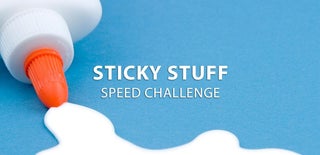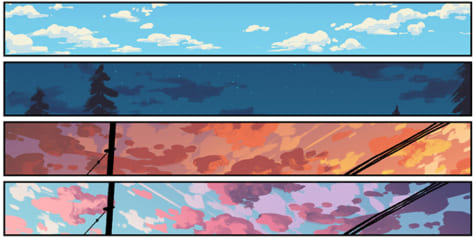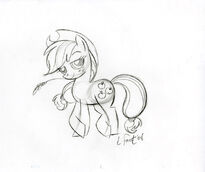Introduction: Mario 8 Bit 3d Pixel Paper Art
Today we will make an 8-bit mario on paper in 3d style, joined only by tape.
Step 1: Materials
- Printed templates
- Scotch tape
- Scissors
- Exact cutter
- Ruler
- Embosser engraver
- Cutting board (optional)
Step 2: Mario 8-Bit
Retro has always caught my attention, and the 8 bit mario was a project that I had to do.
So I decided to make my own Mario in 8-Bit but I didn’t want it to be flat like in the classic game, I wanted it to have shape and volume so I researched and collected many references of this character.
So I found out that this 8 bit style when taken from 2d to 3d is called Voxel Art.
The voxel (volumetric pixel) is the cubic unit that makes up a three-dimensional object. It is the 3D equivalent of the pixel in a 2D object.
the shapes that you can create with the pixels transformed to 3d volume are incredible, these shapes are known as Voxels
Step 3: TEMPLATES
The dimensions of the figure created here are 180mm X 180mm x 140mm.
But in templates I make it Bigger from 180mm to 250mm
and the used paperis: 180g letter size white opaline paper
Step 4: UPDATED TEMPLATES
First of all, I apologize for the delay in uploading the templates, due to my regular work, I had not been able to edit and organize them, I appreciate your understanding.
It has been a hard and slow process, it has been hours and hours of work and editing, creating the model, taking it to the unfolding, the editing of all the flaps, the assembly process and the preparation of the respective guides for you and your making.
But also thanks to all this time I was able to correct some errors and update them with a better model, I was also able to correctly organize all the tabs for their assembly, which as you can see here, since there are no flaps, I glued it with small strips of tape, I did Also some color adjustments, to make it more faithful to the design of the classic game and finally I was able to add some high quality textures. that you will notice in the printing of the templates
After so long the final design is here 🙂
You can download the respective templates below:
>>>Get it Here!<<<
If you find any errors or have difficulties in assembling, send me a message, although the order is quite intuitive, you just have to follow the order of the letters.
Step 5: Cut the Templates
in this step we will cut out the templates.
there are too many pieces and you have to be very exact with the cuts.
I recommend you be patient.
we will first cut the pieces of the template with the scissors and then we will detail them with the cutter
in this step we will use the X-acto on the more detailed parts (like short cut lengths)
and combine it with the ruler on the longer cuts.
We will use the rule in the longest length cuts to give a more perfect finish.
Step 6: The Batch
after that you will have a large batch of parts, which will be a complete mess.
But we need to organize them.
we will begin to assemble them from the head to the base, starting with Mario’s hat
Step 7: Folding the Pieces
To generate the volume, the pieces will be folded, in the shape of a valley or mountain,
for all the pieces we will use the embosser to make bending easier.
For Valley pieces we will mark with the embosser on the front of our piece,
and for mountain pieces we will mark on the back of our pieces.
help yourself with the ruler to have a perfect folding line.
Step 8:
I leave you an example of each type of fold.
You also have to be careful when cutting, since some cuts also require a type of fold when joined, valley or mountain.
Step 9: Cutting the Tape
Now we will see how to assemble all our pieces of the batch,
for that we will cut small pieces of tape that will act as tabs for the assembly of our pieces.
I recommend that you cut a lot of small pieces of tape before you star to join all. as they will make your work rythm more fluid.
check the example in the image and video.
Step 10: Different Tape Lengths
in some pieces you will find parts that are longer than a Voxel.
So for these we will cut longer pieces of tape so that they can cover
the entire area of the part that we are going to assemble.
Check the picture.
Step 11: The Hat
After that you will have something like the images, it is time to assemble all the pieces to form Mario’s hat,
after that we will continue with each piece the face, torso, arms and feet in that order.
Step 12: The Head
Here in the formation of the face you can see that the process is repeated in the consolidation as in the hat, and it will be repeated in each of the pieces.
Step 13: Shape
bit by bit the flat pieces are forming small groups of vexels that form abstract figures
and our Mario is taking shape.
Step 14: Use the Embosser
Remember to press hard with the embosser on the tape, so that the tape adheres more to our pieces.
this way the tape will be joined better to our pieces.
Step 15: The Final Pieces
Now is the time to Join all of our final forms.
It is time to gather all the Vexel groups that were formed from the templates
to finally give the classic form of Mario jumping
I recommend starting the union just as we work each piece separately, from the head to the base,
so you will have no problem gluing the necessary tape to keep Mario solid.
It is worth mentioning that our figure is delicate, so find a safe place to display it.
Step 16: Assemble.
Be careful when joining the pieces, because if you put a lot of pressure on the joints
you will end up separating some of these.
Step 17: ‘It’s-a Me, Mario!’
the final piece is exquisite.
final recommendations:
Always try to print your files on a professional printer.
Before you begin, verify that the tape you use is of good adhesion,
since you could get into a mess in the middle of the process.
maybe also ruining your templates, and you will have to start over.
THANKS FOR WATCH.

Participated in the
Sticky Stuff Speed Challenge






